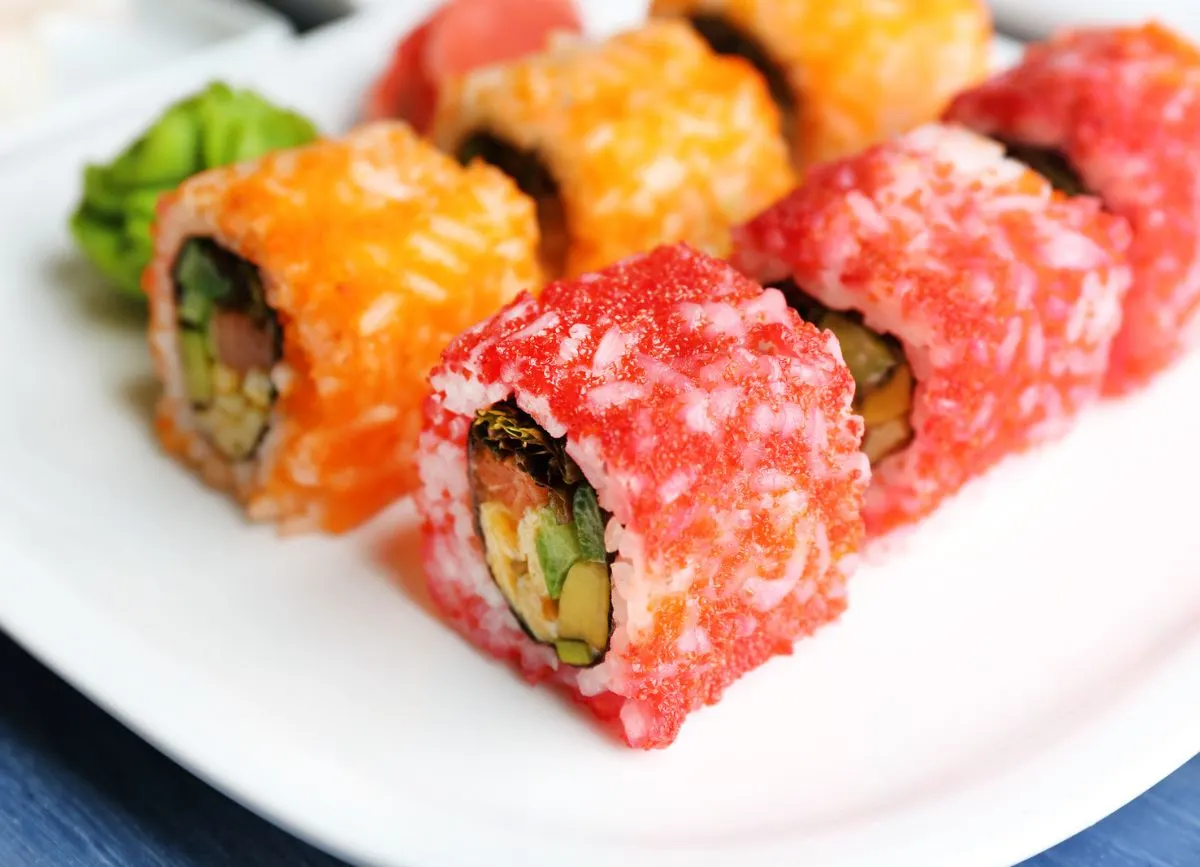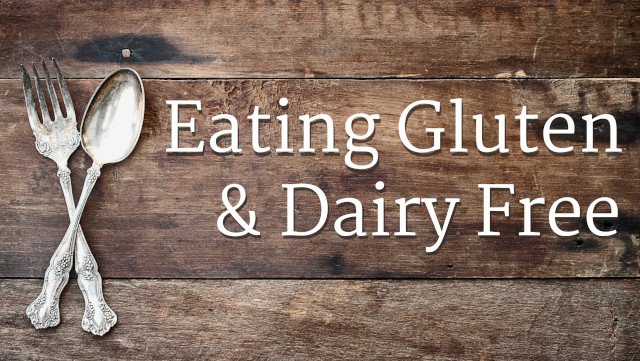Learn everything you didn't know you needed to know about Tobiko and find out if Tobiko is gluten free or not!
Following a gluten-free diet for things like celiac disease can often be tricky. Especially when you are seeking out gluten-free options. There is nothing worse than heading somewhere fancy like Japanese restaurants and finding yourself questioning if you can enjoy all of the lovely-looking Japanese cuisine.
When it comes to finding ingredients that are gluten-free you can sometimes be very wary of some of the more exotic dishes on offer that may come from Asia and beyond, especially things like sushi rolls and sushi rice, which can often contain some ingredients that include gluten.
However, you might be faced with the question as to whether or not Tobiko, a Flying Fish Roe, is actually gluten Free. So we want to cover everything you might want to know about Tobiko, whether you can eat it, and what sort of substitutes you can use if your version of Tobiko happens to contain gluten.

Is Tobiko (Flying Fish Roe) Gluten Free?
Tobiko is gluten-free. In actual fact, most fish roes are a good choice if you have food allergies like gluten intolerance. However, some commercially made Tobiko is made with soy sauce, rice vinegar, and other ingredients that may contain gluten.
This is where when you are buying this in a grocery store you need to ensure that you are aware of the primary difference and the additions to the Tobiko that could make it not suitable if you have food allergies.
Be wary of how the Tobiko is prepared as it may use additives that aren’t gluten-free, despite the main ingredient being a gluten-free sushi roll.
What is Tobiko?
Tobiko by definition is the Japanese word for Flying Fish Roe. It has a similar appearance to caviar and this is where things can often get confusing. The eggs are small, ranging from 0.5 to 0.8 mm. For comparison, tobiko is larger than Masago but smaller than Ikura.
Tobiko, Masago, Ikura, and caviar are four different types of fish roe or eggs from fish. Each one comes from a different species of fish and carries slightly different nutrients, health benefits, things to be wary of, and characteristics making them different.
Compared to other types of fish roe, tobiko tastes a bit sweeter. It also takes on a salty flavor, but it is much milder than some of the other fish roe and has a sort of smoky flavor. The only time it tastes different is when it has been flavored or mixed with other ingredients as it can take on those flavors as well. This is why it can be used in a lot of Japanese cooking such as for sushi.
Tobiko is known to be orange tobiko or golden tobiko in color, but a sushi chef in sushi restaurants likes to infuse the fish roe with other ingredients to change the color and to make things look creative.
Black tobiko often comes from squid ink, red tobiko comes from beet juice, and if you want green tobiko then you can use real wasabi. There are other ways to turn the tobiko a different color and it will also infuse flavors.
Is Tobiko Healthy?
It is hard to answer this question directly with a yes or a no. This is because it can be more opinion-based than anything else. But let's give you some of the facts so that you can make up your own mind as to whether you think it is healthy.
Tobiko is rich in protein, omega-3 fatty acids, and other nutrients. Similar to salmon eggs which are known as Ikura, tobiko is high in phospholipid fat that can help protect the heart and liver, reduce inflammation, and improve learning ability.
However, tobiko is very high in cholesterol. This is where the divide can come in and have you questioning the health aspect. But, we think, consumed in moderation, tobiko is not a problem as the portion sizes of tobiko are usually very small. Let's face it, you never have a bowl full in one go, do you?
Is Tobiko Vegan?
Tobiko is not Vegan. This is because it is a food product that has come from an animal. In this case, the fish eggs are taken from the fish, and during this process, the fish dies. It also wouldn't be suitable for vegetarians.
Pescatarians, who usually enjoy fish alongside a veggie diet, will be able to consume Toboiko and other fish roe ingredients should they wish to.

Tobiko Substitute
You might find yourself with tobiko but it includes other ingredients which means it isn't gluten-free, so do you have any substitutes? There are a couple of things you could use depending on what you are preparing. Masago, Caviar, and Ikura are excellent alternatives to Tobiko.
You could also use Tamari Sauce within the fish roe instead of soy sauce which is an ingredient often found in this sort of cooking. But what are the main differences between tobiko and some of the other fish roe you can use?
How Does Tobiko Differ From Caviar?
The word caviar, in the most classical sense, refers only to the roe of the wild sturgeon fish. This type of fish appears in the Caspian and Black Seas. Over time, caviar became synonymous with roe in general, but this is not technically accurate.
Now, caviar refers to a few different kinds of fish but still typically refers to types of sturgeon. Caviar is usually consumed in small doses, but it can be a good substitute or tobiko if you don't need too much of it and just the flavor.
How Does Tobiko Differ From Masago?
Masago is the name of the capelin egg. It has a bright orange-red appearance, although it is slightly less vibrant than tobiko. It is also smaller than the tobiko and has a different texture, even though it tastes the same.
Similar to caviar, Masago tends to be more of a garnish for things like white fish or spicy tuna. Masago is low in calories and provides healthy protein and fatty acids, as well as important nutrients such as magnesium, selenium, and vitamin B12.
However, Masago tends to be relatively high in sodium. This is usually only enjoyed in moderation and you may find that you have more quantity of Tobiko than you do Masago.
How Does Tobiko Differ From Ikura?
Ikura is the Japanese word for salmon roe. Salmon roe is much bulkier than most other types of fish roe and shinier. Its color is intense reddish-orange due to the presence of specific pigments in the egg.
Ikura is a very nutritious food. It is rich in healthy fatty acids, including omega-3 (EPA and DHA), omega-6, omega-7, and omega-9. Ikura also contains good levels of protein and is rich in vitamin A, an important antioxidant.
The pigment compound in Ikura, astaxanthin, is also a powerful antioxidant, which can help fight free radical damage in the body and protect against the signs of aging. The main difference between Ikura and Tobiko would be the appearance and the fact it is more nutrient-dense. Like with the other fish roe it is also a good option for gluten intolerances as an alternative ingredient.
Out of all of the fish roe options, the closest to Tobiko would be Ikura, as you can enjoy larger quantities of them. Whereas Masago and Caviar are enjoyed in smaller quantities. Ikura would be a good substitute for Tobiko.

Can celiacs eat sushi?
Sushi is one o those dishes that many people enjoy. Often you will find specialist options like a California roll, you can enjoy sushi with teriyaki sauce, spicy mayo, and even things like a cucumber roll. But is sushi suitable for celiacs?
As long as gluten-free ingredients have been used then the answer is yes. In some sushi recipes and Asian cuisine recipes we share we use gluten-free tamari sauce as a great substitution for other ingredients such as soy sauce, which does contain gluten.
We have a few recipes that you might find useful that use tamari sauce that is super tasty and would also work well with the addition of tobiko.
Fried rice - This super tasty dish uses Tamari sauce in replace o soy when introducing different flavors to a traditional fried rice dish. This is perfect for a midweek meal and you could even add some fish roe over the top to give it an extra depth in flavor.
Teriyaki Chicken with Pineapple - Another sweet and sour tasting dish that uses Tamari sauce to ensure that this incredibly delicious meal is gluten-free.
Tobiko, Masago, Ikura, and caviar are four different types of fish roe or eggs from a fish. Each one comes from a different species of fish and carries slightly different characteristics and nutrients.
Tobiko and roe, in general, are relatively beneficial for health, as it is low in calories and high in healthful fatty acids that support the body and reduce inflammation. Tobiko can be high in cholesterol but Tobiko and Ikura are the two types of roe that can form part of a main dish, rather than being applied in small do like some of the other fish roe available.
Therefore you need to consider eating it in moderation. Tobiko is known to be gluten-free, which is great for anyone following a gluten-free diet. But you may need to be mindful when consuming other dishes that include tobiko such as sushi because o the other ingredients included.
You also need to be aware that some modified and store-bought options may also include other ingredients which might not be good for a gluten-free diet. This is when you need to check the labels. Fresh tobiko is gluten-free and can be enjoyed. We hope you found this information helpful.
Try checking out if sesame is gluten free or not.
